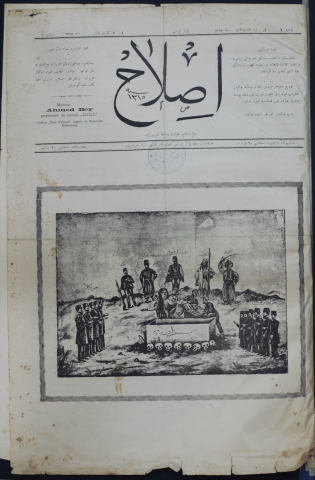
Aims and objectives
The Ethnographic Archive is one of the oldest Bulgarian archives and is situated in the old royal palace of Bulgarian rulers in Sofia - the capital of Bulgaria. Today this building is in a very poor condition and circumstances for record preservation are extremely uncomfortable and unacceptable. The archives have no air-conditioning and there is no protection from humidity, microbes, moulds and direct sunshine.
This project is concerned with preserving two sections of the archives: written documentary material from between the middle of the 19th & 20th centuries and photographic material comprising old photographs, negatives, plates and slides from the second half of the 19th century up to the 40`s and 50`s of the 20th century.
The written documents, containing some 25,000 pages, provide information about the traditions and folklore culture of the Bulgarian society. They include fieldwork researches which scope data to the history, foundation of villages, means of livelihood, Bulgarian material culture (houses, agricultural implements, costumes) and spiritual culture (traditional customs, mythology, folklore). They show the traditional life of Bulgarians and include different villages in the border of Bulgarian ethnic aria. The archival materials present information for Bulgarian pre-industrial society.
The photographic collections contain 10,000 black-white and color photonegatives, 5,000 photographs and 5,000 plates. These photographs document traditional Bulgarian cloths, architectural monuments, rituals, women's traditional costumes, popular customs and life style of Bulgarians. They help to make a complete, exact and objective reconstruction of these lost cultural phenomena, agricultural implements, folk-style objects and national costumes, and present a valuable group of documents to different aspects of traditional folklore culture.
The project will proceed in two stages. The preliminary part of the project will involve moving the written material into archival boxes in new cupboards. A survey will be undertaken of the material at this stage to see which, if any, documents should be digitised. Staff at the Museum will be trained in digitisation techniques and will take significant digital samples of the photographs. A report will be made on the photographs/collections selected for digitising.
The second part of the project will entail the full digitisation of the listed photographic material plus any of the documents which it is agreed should be digitised.
This project will help to preserve for the future this unique valuable and diverse information about the life style, economics and culture of Bulgarians during the pre-industrial period, not contained in any other archives.
Outcomes
All the members of the project team received training in digitisation methods and techniques. 3,865 glass plates, 1,911 old photographs and 4,684 negatives were digitised. All were old and in a poor condition. The written archival material and the photographic material were re-housed in archival boxes and in cupboards. The digital copies of the photographs are all available to view in the Ethnographic Institute and Museum and in the British Library.
The records copied by this project have been catalogued as:
- EAP103/1 Photographic Collections of the Ethnographic Institute and Museum at the Bulgarian Academy of Sciences [Mid 19th - Mid 20th century]
Due to the cyber-attack on the British Library in October 2023, the archives and manuscripts database is currently inaccessible and we are unable to provide links to the catalogue records for this project.



